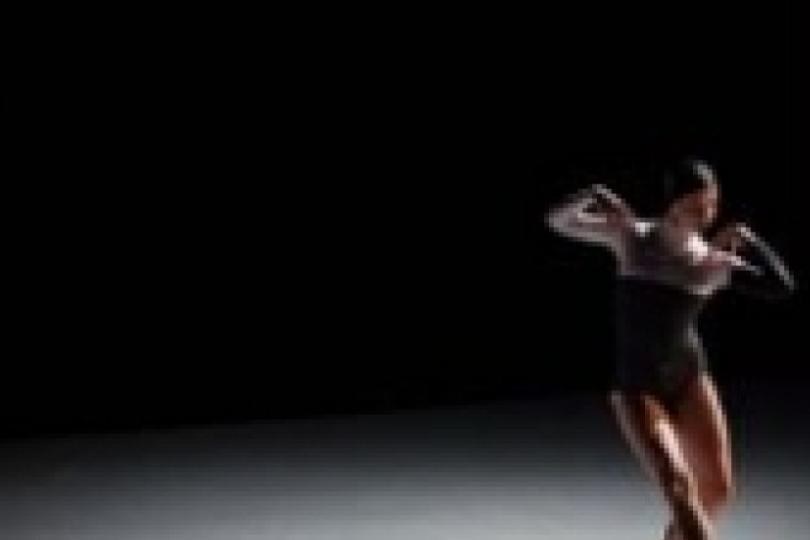ASFB: Giving oneself over to a shadow dance
Editorial

Robert Benchley wrote a wonderful essay about waiting for an opportunity to spring a joke by expectantly lingering on the edges of conversations, leaning into the talk, grunting encouragingly as the perfect set-up approaches, usually wincing through some misdirection, but sometimes cracking a jewel you’ve been wanting to place for years. For me, whose lowest grade of all time was a C in Folk Dancing, the opportunity to rain down judgment on dancers of incomparable skill and beauty was that sweet, and at least that funny. And the performance by Aspen Santa Fe Ballet was certainly no joke.
Keats said, “Beauty is truth, truth beauty. That is all ye know on Earth, and all ye need to know.” ASFB, to use the company’s jauntily modern handle, was stunningly beautiful in performance. So much so, some audience members seemed put off by the dancers' beauty. While pretending to examine the historic wainscoting of the historic State Theater, I overheard a number of dancegoers commenting, in a curiously negative manner, on the physical perfection of the dancers. “Pretty people,” said one fashionable consumptive, in a tone implying not only was it suspect to look this good, but that he or any of his circle could obviously be just as ripped if they were paid to dance all day.
The dancers were remarkable specimens (to use a term of impressive nearly scientific rigor and faux-Olympian distance, wheeee!). The men sported abdominal muscles on muscles usually featured in comic-book figures and on actors in computer-enhanced movie sagas about battling gods. The women sprang through the air like some kind of antelope renowned for springing. (This is informal unpaid criticism, and I will not research antelopes just to make a point, especially as certain readers would certainly Google whichever species I mentioned anyway, and post dismissive comments about their jumping abilities. Nonetheless, maybe Springbok; sounds bouncy.)
Other eavesdropped conversations dwelt on the extremely technical achievements of the dancers, comparable to brain surgery, watch repair, extending Pi, convincing people to attend live theater, that kind of major skill level. At a bare minimum, the dancers insulted gravity and extended the theoretical range of human joint movement. The technical demands seemed to me the main difference between what I was seeing and modern dance, which, God Bless It, lets older performers have a go now and then, as well as dancers with chubby bellies and chunky legs, and more terrestrial physiques in general. I’m not saying modern dancers are all schlubs, I just can’t visualize ASFB putting up with that any bit of human imperfection, not for a minute.
Of course, as a semi-professional obsessive compulsive, I was obliged to peep at what actual dance critics do, if for no other reason than to avoid accidentally churning out something similar to real criticism. Among dance critics, there seem to be three main strategies to writing about dance. Each is a way to deal with an aesthetic experience not readily accessible to language. Yet each was rather refreshing to one used to reading theater reviews, as the dance critic generally seems to start from the point of view that the performance is what it was intended to be, not a failed attempt to create another thing that the critic would have preferred to see.
Strategy One is poetic. The critic describes the performance using the sort of language common to writing about wine. So, here’s my go at this strategy. The evening’s first piece, Cayetano Soto’s “Uneven” was rich and oaky, with intriguing dark passages, and touches of vanilla and berries in the finish. “Red Sweet,” the closer, by Jorma Elo, was heady and astringent, with a hint of effervescent humor. The palate-cleansing middle bit, “In Hidden Seconds,” by Nicolo Fonte, was luscious and creamy, folding intoxicating waves of interweaving textures into a mysterious harmony. I suspect this may be, as it is for wine, the most effective strategy for conveying the ineffable experience of dance, as near to low comedy as metaphorical synesthesia may sometimes come.
Strategy Two is abstract. The joy and the sorrow of highly abstract criticism on any subject is the reasonable chance that no one will have any idea what you’re actually saying. Anyone who’s read Roland Barthes or Michel Foucault, or talked to someone who has, knows what I’m talking about. Reading that kind of dance criticism seems to me like reading Stephen Hawking’s books. I nod and get really excited when I read Hawking’s stuff, but the minute I’m done reading, I have no idea what he was saying. The use of Space seems important to abstract dance critics. And Line. My own insights into the subject of Space are limited and literal. Space is Relative. There is a lot of it out West, and progressively less as one moves East. For example, the trains of the West have room in the private compartments to stretch your legs, while in the East, the toilets are in the beds. The ASFB dancers, I think, would prefer the trains of the West.
Strategy Three is my personal favorite. The critic bluntly admits that the experience of live dance can’t be effectively pinned down by words, only experienced. I think, despite the fun of talking about things that don’t lend themselves to being talked about, that this is probably true, and that the most genuine dance-watching experiences don’t reside in the head at all, but in the body.
When my daughters played soccer I used to suffer from what I called Soccer Dad’s Knee, caused by kicking sympathetically from the sidelines at balls in play on the field. When watching ASFB I felt myself subliminally leaping and springing and tiptoeing, manipulating Space and Line in intoxicatingly vanilla-y and oaky ways. I thought this was an enormously clever insight into the aesthetics of dance that no one ever had, but there are whole worlds of writing, even websites, devoted to the idea. It’s called kinesthetic empathy.
I suspect kinesthetic empathy is central to all our aesthetic experiences. The fiction writer and critic John Gardner thought the reader experienced writing in something like a dream state. I think we come to all art as dreamers, giving ourselves over to a shadow dance within our muscles and nerves like dogs running and yipping in their dreams. Dancing along with the Aspen Santa Fe Ballet was the best kind of dream, beautiful and true, taking me to places a guy with a C in Folk Dancing would never even have been able to imagine.




